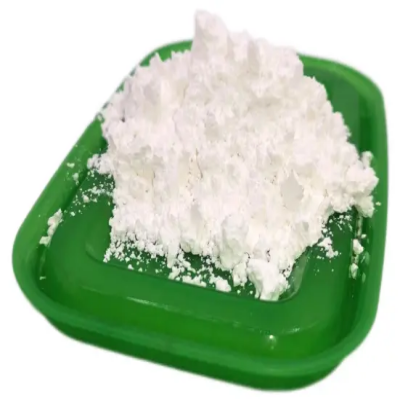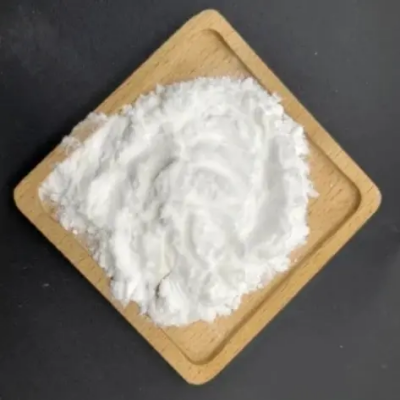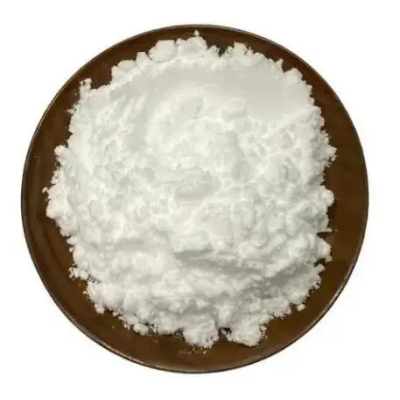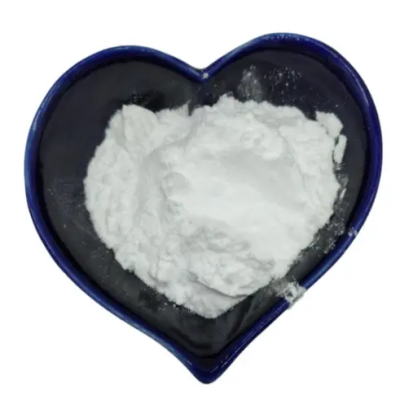-

Caprylohydroxamic Acid CAS:7377-03-9
Caprylohydroxamic acid is a gentle yet effective preservative and chelating agent used in cosmetic and personal care products. This innovative ingredient offers broad-spectrum antimicrobial properties while being considered mild on the skin, making it suitable for formulations targeting sensitive skin types. Caprylohydroxamic acid functions by inhibiting microbial growth, extending the shelf life of products, and ensuring their microbiological safety. Its ability to enhance product stability and safety has made it a popular choice in skincare, haircare, and cosmetic formulations, providing protection against microbial contamination without compromising skin tolerance.
-

TetramethylolAcetylenediurea CAS:5395-50-6
Tetramethylolacetylenediurea (TMA) is a chemical compound used in the field of organic synthesis, specifically as a crosslinking agent in the production of polymers and coatings. It is known for its ability to improve the adhesion, durability, and flexibility of various materials. TMA plays a crucial role in enhancing the performance and stability of products in industries such as adhesives, sealants, and surface coatings.
-
![tetrahydro-1,3,4,6-tetrakis(methoxymethyl)imidazo[4,5-d]imidazole-2,5(1H,3H)-dione CAS:17464-88-9](https://cdn.globalso.com/xindaobiotech/02MHOTZ@JJJ5JECNY66BYI36.png)
tetrahydro-1,3,4,6-tetrakis(methoxymethyl)imidazo[4,5-d]imidazole-2,5(1H,3H)-dione CAS:17464-88-9
Tetrahydro-1,3,4,6-tetrakis(methoxymethyl)imidazo[4,5-d]imidazole-2,5(1H,3H)-dione is a chemical compound used in various applications. It possesses unique structural characteristics and reactivity, making it valuable for diverse industrial processes and formulations.
-

N-Phenyl-8-naphthylamine-1-sulfonicacid CAS:82-76-8
N-Phenyl-8-naphthylamine-1-sulfonic acid is an organic compound with diverse industrial applications. It is commonly used as an intermediate in the synthesis of dyes, pigments, and other chemical products. This compound’s unique chemical structure and reactivity make it valuable for various industrial processes and formulations.
-

Tritylolmesartanethylester CAS:144690-33-5
Tritylolmesartanethylester is a chemical compound belonging to the class of angiotensin II receptor antagonists used in medicinal chemistry and pharmaceutical research. Its unique structure and pharmacological properties make it a subject of interest for the development of potential therapeutic agents targeting the renin-angiotensin system, particularly in the treatment of cardiovascular disorders and hypertension.
-

TriphenylMethylOlmesartan CAS:144690-92-6
TriphenylMethylOlmesartan, also known as TPOM, is a novel compound with potential therapeutic effects. This chemical entity has garnered interest due to its unique properties and promising applications in the field of medicine and pharmacology.
-

benzyl(1-(4-(((4-fluorobenzyl)amino)carbonyl)-5-hydroxy-1-methyl-6-oxo-1,6-dihydropyrimidin-2-yl)-1-methylethyl)carbamate CAS:518048-02-7
Benzyl(1-(4-(((4-fluorobenzyl)amino)carbonyl)-5-hydroxy-1-methyl-6-oxo-1,6-dihydropyrimidin-2-yl)-1-methylethyl)carbamate is a complex organic compound with potential pharmacological significance. It contains functional groups that contribute to its diverse chemical properties.
-

8-aminonaphthalene-1-sulphonicacid CAS:82-75-7
8-Aminonaphthalene-1-sulfonic acid is an organic compound widely utilized as a versatile intermediate in the synthesis of dyes, pigments, and specialized chemicals. Its unique chemical structure and reactivity make it valuable for various industrial applications and formulations.
-
![6-(5-Chloro-2-pyridyl)-6,7-dihydro-7-hydroxy-5H-pyrrolo[3,4-b]pyrazin-5-one CAS:43200-81-3](https://cdn.globalso.com/xindaobiotech/3M1VW1B@YPLJSN5G14.png)
6-(5-Chloro-2-pyridyl)-6,7-dihydro-7-hydroxy-5H-pyrrolo[3,4-b]pyrazin-5-one CAS:43200-81-3
6-(5-Chloro-2-pyridyl)-6,7-dihydro-7-hydroxy-5H-pyrrolo[3,4-b]pyrazin-5-one is an organic compound with a pyrrolopyrazine structure incorporating a hydroxy group. Its chemical composition and structural features make it a molecule of interest for various scientific investigations and potential applications.
-
![6-(5-Chloro-2-pyridyl)-5H-pyrrolo[3,4-b]pyrazine-5,7(6H)-dione CAS:43200-82-4](https://cdn.globalso.com/xindaobiotech/1ZX_HC366YSVPV22D9H17.png)
6-(5-Chloro-2-pyridyl)-5H-pyrrolo[3,4-b]pyrazine-5,7(6H)-dione CAS:43200-82-4
6-(5-Chloro-2-pyridyl)-5H-pyrrolo[3,4-b]pyrazine-5,7(6H)-dione is an organic compound with a unique pyrrolopyrazine structure. It exhibits diverse chemical properties and has garnered interest for potential applications in various scientific and industrial sectors.
-

5-methyl-1,3,4-oxadiazole-2-carboxylicacidpotassiumsalt CAS:888504-28-7
5-methyl-1,3,4-oxadiazole-2-carboxylicacid potassium salt is a chemical compound that belongs to the oxadiazole class. It is a potassium salt derivative of 5-methyl-1,3,4-oxadiazole-2-carboxylic acid, possessing distinct chemical properties and potential applications in various fields.
-

Levobupivacaine CAS:27262-47-1
Levobupivacaine is a local anesthetic medication belonging to the amino amide group. It is structurally related to bupivacaine and shares similar anesthetic properties. Levobupivacaine is used for its potent numbing effect while having a lower risk of cardiotoxicity compared to its racemic mixture.

